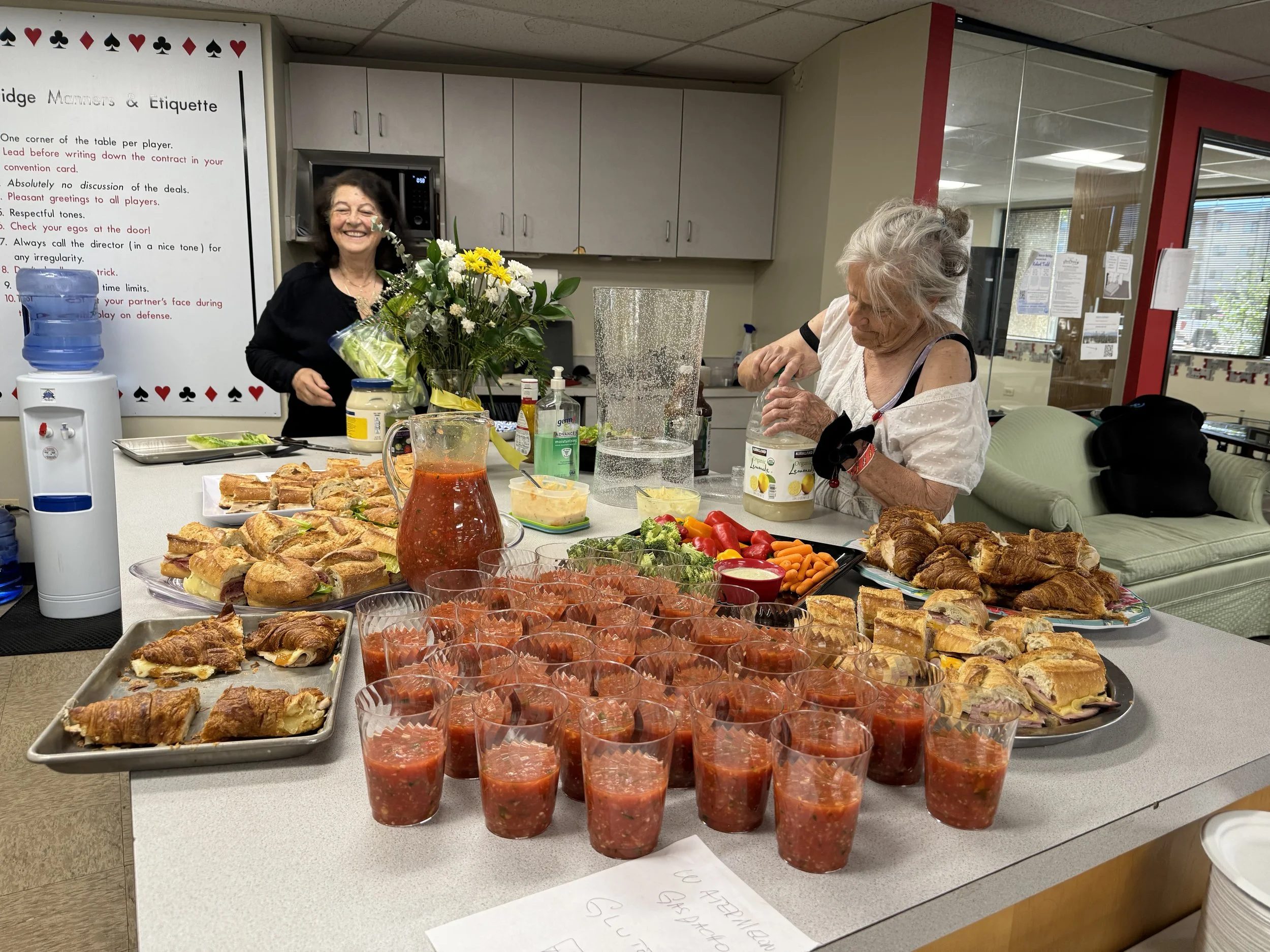This Week in Bridge
(540) Last Train Slam Try
© AiB Robert S. Todd
Level: 10 of 10 robert@advinbridge.com
General
One of the ways that we investigate slam in a suit contract is the use of control showing bids. When one member of the partnership is interested in slam, they show this interest by making a control showing bid. Based on our partnership agreement this control showing bid either shows a 1st round control or a 2nd round control in the suit bid. Once we start the process of making control showing bids then we continue to do so to explore slam. But as the auction approaches game we have a big decision to make: should we go past game or not? This can be a difficult decision; we should not go past game without a good reason -- some extra values. In this situation we would like to have a way to make “one more try for slam”. The way that we do that is with a convention called the Last Train to Clarksville (“Last Train.”) Let’s see how this gadget works!
Last Train Slam Try
Last Train started out as a very specific slam try that Meckstroth and Rodwell created as a part of their control showing bidding situations, but it has evolved into a more general concept that applies in situations where we do not want to go past game, but we do not want to give up on slam – that “one last try”!
The general idea is that when we use a control showing bid to make a slam try and we are 2 steps below game (meaning there is one bid between where the auction is and our game contract), then we can use this one “in between” bid to a last try for slam – the Last Train! (Better Get on Now!) This means that bidding this very last bid no longer 100% promises a control in that suit – it could be a control showing bid or it could be Last Train.
Some Last Train Auctions
Let’s look at a couple of auctions where we might use the Last Train slam try.
Example 1
Playing this gadget, the following auction has several of these slam try meanings:
1♠ 2NT*
3NT* 4♦
4♥
Here, Responder uses Jacoby 2NT to try for slam in ♠ and Opener shows no shortness and some extra values with a 3NT. Responder makes a control showing bid in ♦, which, depending on our style, either denies 1st round control in ♣ or 1st/2nd round control in ♣.
Since Responder is unlimited in values, if Opener has a control in ♣ and a decent hand they may bid 4♥ even without a ♥ control. Of course, with a ♣ control Opener could bid 5♣ or 4NT, but they may not want to go past 4♠. This 4♥ bid is a Last Train bid and is the way the Opener makes sure to continue to encourage Responder if they like their hand.
Example 2
1♥ 2♣
2♥ 3♥
4♣ 4♦
Here we are in a 2/1 GF auction and Responder bids 3♥ to make a slam try. Opener cooperates, showing a ♣ control and bypassing a ♠ control. Opener has not limited their hand and so if Responder has a hand that still has some slam interest, they should not just rebid 4♥. Responder should make one final try and bid 4♦. Here 4♦ is either a control showing bid, showing a ♦ control, or the “Last Train” showing a decent hand and not willing to give up on slam (like a good hand with a ♠ control).
♠ A84
♥ KQ3
♦ 94
♣ KQ742
If Responder has the above hand, then a Last Train 4♦ bid may help us reach a slam opposite this hand:
♠ 84
♥ AJT8532
♦ K9
♣ AT
4♦ would likely get Opener to bid on with this hand.
Conclusion
Last Train is considered an expert tool, but it is really the implementation of good intermediate+ bridge – try to encourage your partner to keep bidding when you like your hand. When you are in a slam try auction and partner cooperates, then with a great hand you can simply take control by bidding 4NT Keycard and head on towards a small or grand slam. But if you have only a decent hand, you might be too worried about getting the auction to the 5-level and not be willing to bid 4NT (being at the 5-level down 1 is very depressing). So, once you start a control bidding auction, Last Train is an effort by either player to not give up – one last try for slam! You may think this is a control showing bid, and often it will be, but know that this last bid can be useful more flexibly to continue to explore slam. Recognizing this Last Train can take a little practice, but it is a valuable tool for not giving up on slam when you still like your hand.

